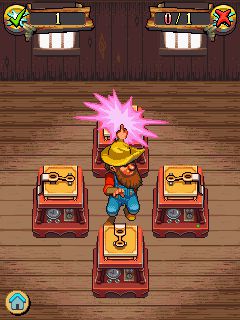

The clouds of mosquitoes will start with you in Northern Washington. There are many types along the PCT, and you’ll slowly learn their behaviors as you move from one type of mosquitoes territory to another. The worst bugs you’ll encounter on the PCT are mosquitoes. It’s a short distance from route 20 to Stehekin (2-3 days at most), and if you used one, you can mail your bear canister home at Stehekin. Stash food at route 20 (we did so in a bear canister), then your next resupply will be in Stehekin.

Get permits with the local ranger stations here because you’ll be in a National Park, and you’re required to have them. Then you can follow Panther Creek Trail and Thunder Creek Trail going over Park Creek Pass, which will have snow on it. A great low elevation alternative is to hike along Ross Lake to reach the Canadian Border. Hiking on the PCT isn’t the only way to hike from Canada to Mexico. If it’s a high snow year consider alternatives. To start your hike, go to Seattle, and find someone willing to drive you to Hart’s Pass, then hike north to the border. For that reason I recommend starting at Harts Pass. It it illegal to enter into the United States from Canada on the Pacific Crest Trail, and at least one hiker has wound up in jail for attempting this… not a great way to start your hike. You can either hike north from Harts Pass or Route 20 (Rainy Pass) to the border to start your southbound hike, or enter from Manning Park in Canada. There are practically speaking two ways of doing this, but legally speaking only one. Once you hit solid ground, it’ll feel like you’re floating along watching the beautiful scenery go by and you’ll be loving your thru-hike.įirst of all you’ll need to get to the beginning of the trail, which is at the Canadian border. Once you get past the snow, you will be done with the hardest part of the trail. Kicking steps takes time, and navigating takes time too. I never thought it could take me 15 or 16 hours to go 11 miles. Many people going southbound in 2014 had to push hard to make it through the Glacier Peak Wilderness before they ran out of food. You’ll be starting your hike at the peak of the summer with the most amount of daylight, and you’ll need it! Luckily your appetite won’t kick in for the first week or two, so you’ll get away with carrying a little less than you would otherwise, but nonetheless, you should over-pack on food, because that will be your limiting factor.

The one thing in your favor here is the sunlight. Best to plan for 10 miles a day when it comes to food. If you’re walking on 50-100% snow, you should plan for 10 to 15 mile days. Estimate that hiking in snow will take you twice as long as normal hiking. You’ll be looking hundreds and sometimes almost a thousand feet down on one side and kicking steps into the mountain and you’ll be holding your ice axe in your uphill hand and your trekking pole in your downhill hand. In Northern Washington you’ll spend a significant amount of time traversing steep slopes and avalanche chutes covered in snow. You’re more likely to post-hole through soft snow, and you can injure yourself on rocks, sticks, etc that are under the snow. The snow will be harder in the morning and softer in the afternoon. As you gain experience on snow, you’ll slowly learn how different snow feels beneath you. Learn about cornices, snow/ice bridges and post-holing. There are great videos on all these techniques. Learn to walk in crampons or microspikes- in particular, learn to kick steps. The Northern Cascades are very rugged and actually quite different from the Sierra, and you’ll want to have practiced in a safe environment before you show up.

You will need the skills before you have a good chance to practice them on trail. Google “self arrest” and watch some videos then go out and practice on a snowy slope.
#OREGON TRAIL 2 STRATEGY HOW TO#
There is no use having an ice axe if you have no idea how to use it. Also, learn some snow skills before you get out there. If you want specific recommendations, let me know, but any and all of these could save your life on the snow. In a normal or high snow year, I would recommend the following gear: ice axe, crampons or microspikes (don’t go with yak-tracks or anything else that’s only really for walking on icy sidewalks), GPS, compass, map, and personal locator beacon.


 0 kommentar(er)
0 kommentar(er)
